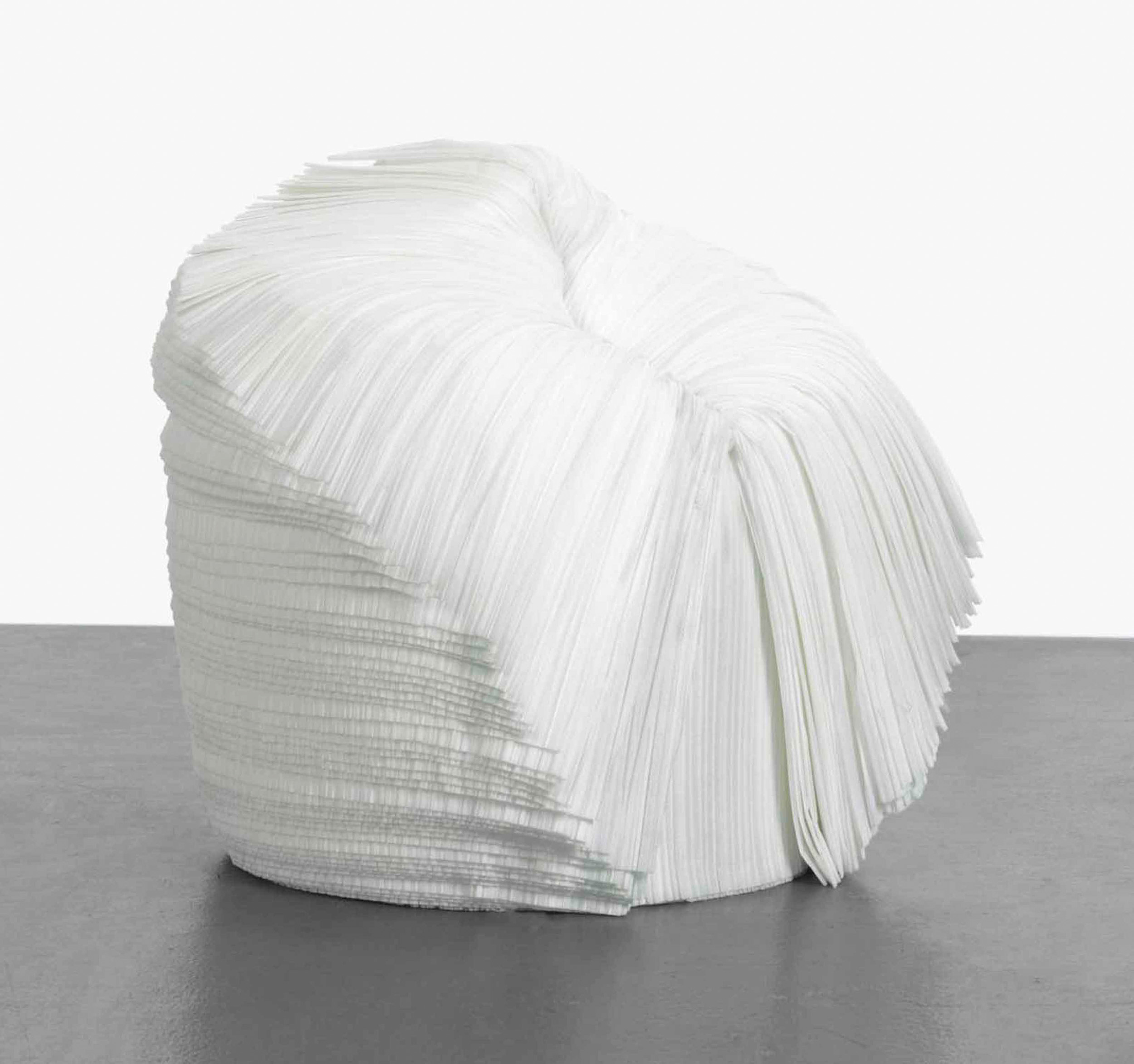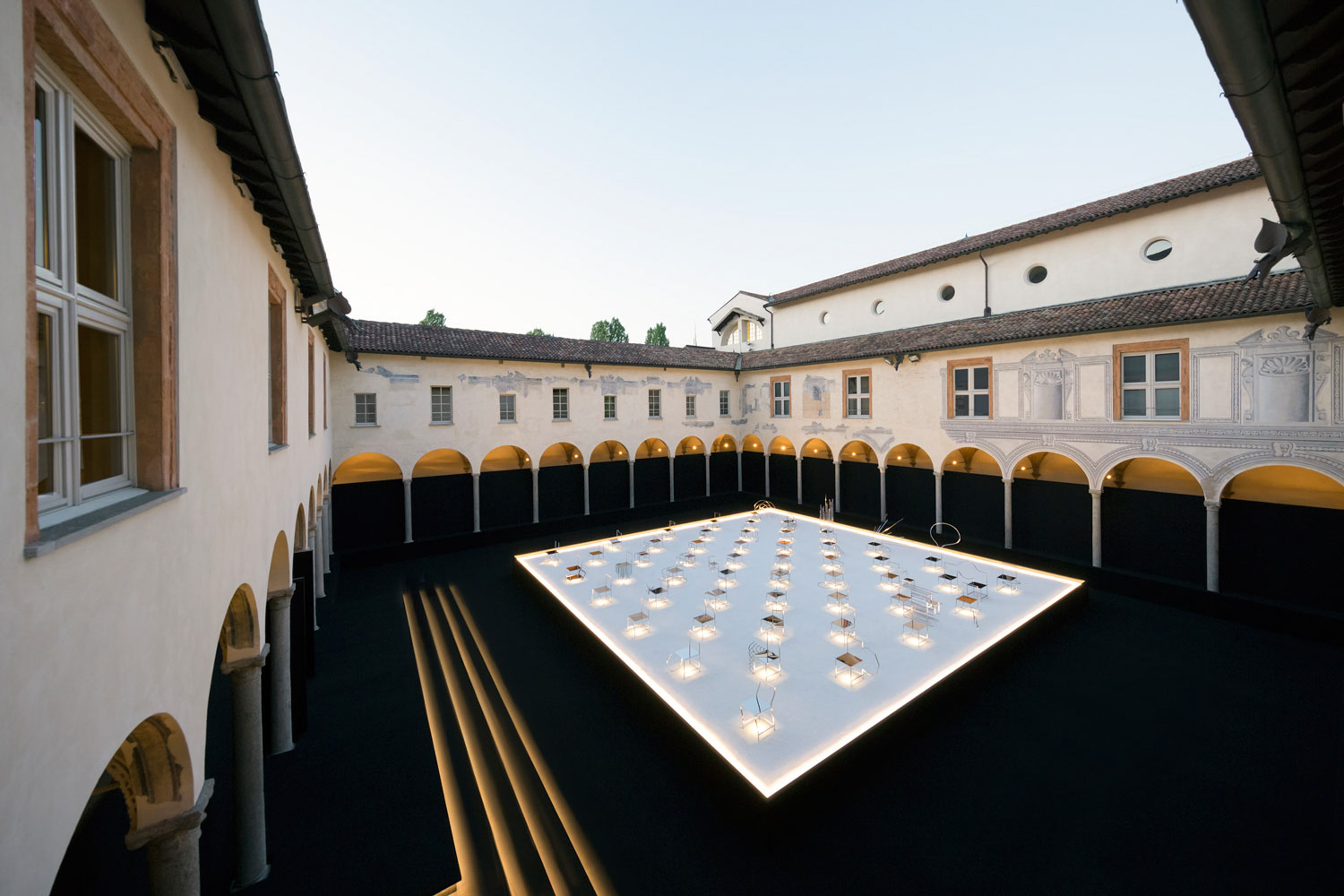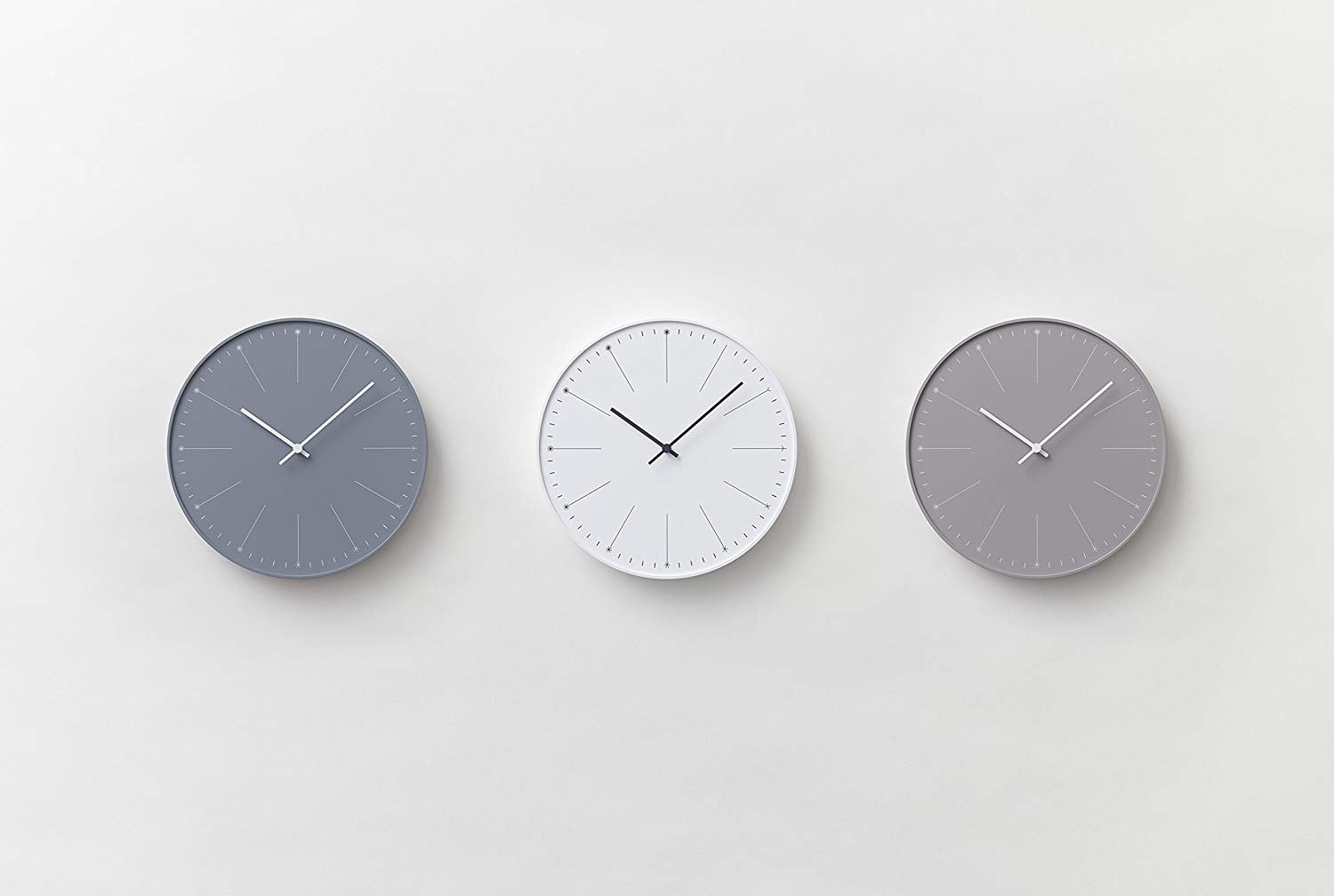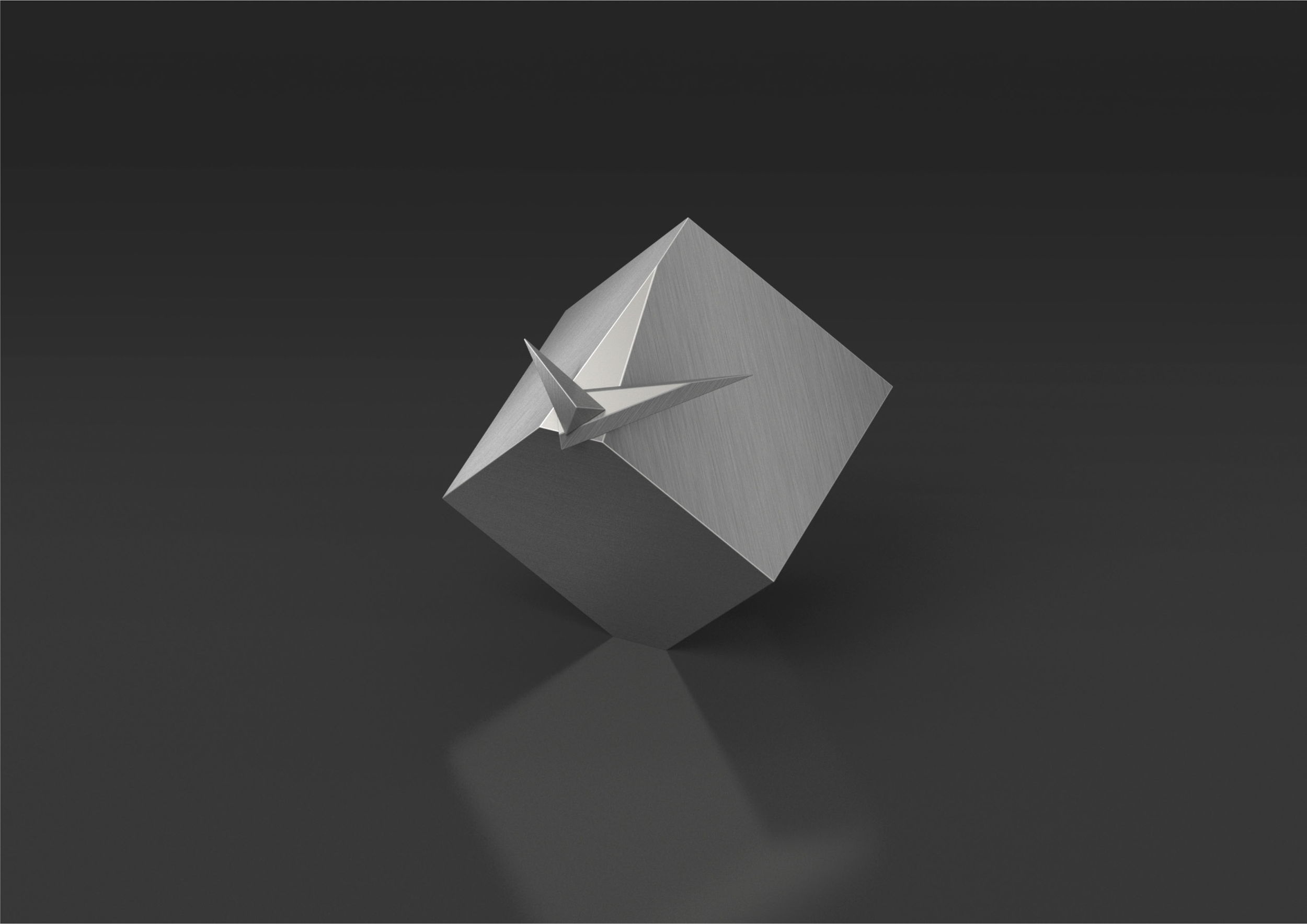Cultural Perspectives • 19 Nov 2019
Oki Sato And The Work Of nendo
There is a certain dynamic tranquillity about the work of nendo – Oki Sato’s esteemed Tokyo and Milan-based design firm. Their projects are thoroughly contemporary executions of clean, crisp and refined design with a touch of eccentricity and a delightfully playful spirit. With a portfolio that encompasses the disciplines of architecture, product design, interior design and art installation, there are few places were nendo dares not to venture.
[Register interest for nendo’s Then Now Beyond Objet d’art here]

Melburnians like myself might remember a vast gallery space filled with nendo’s ‘50 manga chairs’ at the inaugural NGV Triennial in 2017, or perhaps more recently the Escher x nendo: Between Two Worlds exhibition (also at the National Gallery of Victoria) last summer. Beyond Melbourne, nendo’s work is held in the permanent collections of the likes of the Centre Pompidou in Paris and the Design Museum in London, and has featured in exhibitions at Milan Design Week and MoMA in New York.

Some of the most significant names in the world of art and design recognise nendo as a company worthy of critical and public attention. Given its relative youth, nendo is a remarkably accomplished, sophisticated and multidisciplinary studio – not only does it epitomise the current aesthetic trends coming out of Japan, but it has also played a major role in setting the global direction of design.

As its founder and chief designer, Oki Sato is integral to nendo’s vision and creative output. Immediately recognisable in his signature white shirt, black trousers and black jacket, his minimal, achromatic clothing exudes a considered and quietly confident sense of style. This distinctive wardrobe is representative of a broader ambition of Sato to instil as much repetition in his life as possible – he believes that repetition allows one to notice minute changes in their surroundings and therefore allow for finding inspiration life’s small moments.

Although his work is undoubtedly Japanese in form and character, Sato in fact spent the first decade of his life in Toronto, Canada. At age ten he moved with his family to Tokyo, Japan – the city in which he would complete his M.A. in Architecture at Waseda University and found nendo in 2002. Even at university he was noticed as a burgeoning talent and in the professional world, industry accolades soon followed.

He was named ‘Designer of the Year’ by both Wallpaper* and Elle DECO in 2012 and by Maison & Objet in 2015, he placed first in dezeen’s 2016 ‘Designers Hot List’ and has served on the jury of the iF Design Award and the Golden Pin Design Award. Perhaps his idiosyncratic design mentality has found exactly the right time when our aesthetic pallets are particularly attuned to subtlety, quality and personality in the wake of an assault of cheap, quickly-sold-and-even-more-quickly-thrown-away commercial goods – or perhaps it’s simply good design. Either way, Oki Sato’s discerning creativity captures the spirit of our time and renders it in simple, sophisticated and clever forms.

Each project at nendo begins with a sketch. Sato describes himself as an ‘awful’ sketcher, but these charmingly whimsical drawings are one of the most important aspects of his design process. The purpose of each sketch is to tell the story behind the design – they illustrate both a project’s purpose and its inspiration. From there the studio will move on to making renderings and producing models until the design is ready for production. Finished pieces from the nendo studio are remarkable objects in that they are functional and practical yet also beautifully crafted and aesthetically intelligent – rather like a timepiece.

Sato has in fact dabbled in several horological pursuits including the ‘dandelion’ wall clock for Lemnos in 2014 and the playful ‘cuckoo-watch’ reimagination of the Maurice Lacroix Pontos Day Date in 2017. From a watchmaking perspective, the most notable was the 2015 collaboration between nendo and Tag Heuer to create a limited edition Carrera Calibre 1887 ‘Time Machine’. By leaving the face and case unchanged but replacing the typically sharp, geometric hour and minute hands of the Carrera chronograph with wonderfully ornate red hands, nendo created a brilliantly bemusing yet endearing composition of ‘old’ and new. Reinterpreting such a classic model for a company like Tag Heuer may have been a tricky task, but the final result was typically nendo in its thoughtfulness, attention to detail and humour. Similarly, nendo’s recent design for The Hour Glass embodies that same playful spirit which the firm has become renowned for. Read about the Cubic Clock here.

Japanese design possesses a distinct proclivity for craftsmanship and quality – a native proclivity which Sato undeniably upholds despite his reputation for cheerful experimentation and disruptive creativity. The work produced by esteemed studios such as nendo seek to push the boundaries of design to create objects that inspire, challenge and improve the world around them. As one of the true talents of our time, whether he is sketching a bookcase, a chair, a cutlery set or a desk lamp, everything is design for Oki Sato.
The Hour Glass “Then Now Beyond” Exhibition runs from November 24 until January 31, 2020 and is located at Malmaison by The Hour Glass (270 Orchard Rd, #01-01, Singapore 238857). Stop by to see the nendo Cubic Clock and other featured art works and Commemorative Editions.
















